What’s Fiber Array?
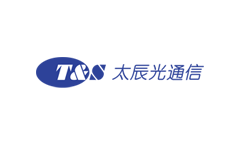
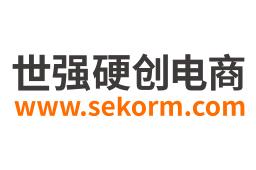


One- or two-dimensional arrays of optical fibers are known as fiber arrays, fiber-optic arrays, or Fiber Array units. Instead of being formed over the entire fiber length, such an array frequently only exists for the very end of a bundle of fibers. Such an array's function typically involves coupling light from a source array to the fibers or from the fibers to another component, like a set of planar waveguides on a photonic integrated circuit. The following explanations cover various other applications.
Individual fibers are frequently inserted into V-grooves created on a solid surface to create a linear fiber array. A precise array of holes in a glass, polymer, or metal plate, for instance, could be used to position fibers in a two-dimensional array. A straightforward square lattice is the most typical type of 2D matrix, though other types are also possible. Although more complex and irregular patterns are possible, a simple and very regular structure is formed almost always. Fiber arrays, for instance, can contain several groups of fibers, i. e. and some of the fibers are spaced apart more widely. Fiber bundles, on the other hand, are really asymmetrical structures. Additionally, the fibers may form an irregular bundle in some places while forming a completely regular array at the end, which would serve as the interface.
The fiber spacing is frequently kept to a minimum, but in some cases, fiber arrays with noticeably larger spacing are used for specific applications.
Fibers Used. The majority of fibers used in fiber arrays are silica fibers, which can be used in a range of spectral ranges, from the near-infrared to the ultraviolet. They can, however, also be made from specific specialty fibers. Depending on the application, single-mode and multimode fibers are both employed. There are instances where polarization-maintaining fibers (e. g. of the PANDA type) are employed.
Packaging. Making sure that the fiber ends are perfectly aligned in all dimensions is crucial when making fiber arrays. Additionally, the input or output end frequently needs to be packaged so that the entire fiber array can be handled easily and safely. For instance, the end of a fiber array could be a block of optical glass material that is shaped appropriately and may have alignment-helping features, much like a fiber connector. One may also surround an array with a metal flange, especially for 2D arrays.
The coupling losses are greatly reduced by applying an anti-reflection coating, which can also be used with bare fiber ends.
Cleaving and Splicing. Cleaving each involved fiber individually is not desirable for volume manufacturing. As a result, processes based on lasers that can cleave entire arrays have been created.
The ends of the
fibers are typically cleaved perpendicularly, but occasionally they need
to be polished at an angle relative to the fiber axis. After rigidly
embedding the fibers in a glass structure, they are typically polished
together rather than individually.
Fusion splicing can also be
used to assemble entire fiber arrays, as
opposed to just single fibers [1]. Such procedures have been
developed, such as softening fiber ends with CO2 lasers. For multimode
fibers, at least, the resulting splice losses can be quite minimal.
Coupling to a Lens Array. It is frequently collimated with a lens array (or microlens array), especially when the output of the fibers is sent into empty space. Naturally, the fiber spacing must then precisely match the lens spacing, and accurate alignment is essential because it greatly affects the direction and level of collimation of the resulting beam.
Fiber Array applications
There are many different uses for fiber arrays.
Coupling to photonic integrated circuits. It is necessary to interface photonic integrated circuits and similar optoelectronic devices with the outside world, primarily using fiber optics. The number of inputs and outputs is frequently quite large; various signals are guided in various waveguides on the circuit, and those reaching the chip's edge require coupling to optical fibers. Naturally, this results in the use of fiber arrays.
Due to their small size, waveguides and fiber cores must be positioned very precisely in relation to one another. Only active alignment, i.e., can accomplish that. e. with the transmission being measured during the alignment process, frequently under automatic control.
Data and telecom applications. To distribute a data signal to several outputs, it is frequently necessary to split the signal. Cable TV is a common example, where the same collection of TV shows is distributed to various audiences. Planar waveguide circuits, whose outputs must be coupled to fibers, are frequently used for signal splitting (often following a fiber amplifier). Thus, coupling the fibers to the splitter is best accomplished using a fiber array.
In wavelength division multiplexing, where each fiber of a linear array may be associated with a different center wavelength, and fiber-optic switches for network routing, similar issues are also present.
In optical fiber communications, data can be transmitted at astronomical bit rates and possibly in both directions at once. The use of multiple fibers is however occasionally required. Then, using interfaces (fiber connectors) based on fiber arrays is desirable to simplify connections. One makes sure that no fibers are unintentionally exchanged while establishing a connection for all pertinent fibers in a single connecting process.
The flexible routing of data signals using 1D or 2D fiber arrays in conjunction with microlens arrays and movable mirror arrays made with MEMS technology is another application in the telecom sector. Such small devices can be made to function as quick and flexible optical cross connect switches.
These technologies are useful not only for telecom providers, but also in a wide range of other industries, including fiber-optic sensing, infrastructure monitoring, and factory automation.
Coupling to Laser Diode Arrays/VCSEL Arrays. A standard array of laser emitters is present in laser diode arrays, also known as diode bars. A fiber array and such a device can be coupled so that each image's radiation enters a different fiber. For VCSEL arrays, similar methods can be used.
Beam Combining. Spectral beam combining works especially well with linear fiber arrays. A diffraction grating could be used to combine the beams from each fiber in the array to create one fiber laser, for instance.
Each wavelength slot in the emitter array on the left has a single fiber. The output has a complete superposition of all wavelength components.
With a 2D fiber array and an appropriate lens array for collimating the light, coherent beam combining is also feasible [8, 9]. Here, the single-frequency, phase-stabilized output of a fiber amplifier is fed to each fiber. For the output to have a high beam quality, all the components must be placed very precisely.
- |
- +1 赞 0
- 收藏
- 评论 0
本文由出山转载自T&S Blogs,原文标题为:What’s Fiber Array?,本站所有转载文章系出于传递更多信息之目的,且明确注明来源,不希望被转载的媒体或个人可与我们联系,我们将立即进行删除处理。
相关推荐
LC Duplex Fiber Optic Connectors for High Density Environments with the Features of High-reliability, Low-cost And High-density
With the rapid application of 5G, how to provide a high-density, low-cost, easy-to-manage, and high-reliability network cabling system for data centers has become an increasingly important requirement. The LC duplex fiber optic connector is a high-reliability, low-cost, high-density wiring solution.
What is Armored Fiber Optic Patch Cord and What Are the Characteristics?
Armored patch cord is a special kind of fiber optic patch cord, specially designed with a layer of stainless steel casing to protect the optical fiber. It has the advantages and functions of a standard fiber optic patch cord but also has armored durability.
Comparison of Advantages and Disadvantages Between 40G QSFP+SR4 Optical Module and QSFP+ AOC Active Optical Cable
Both 40G QSFP+SR4 optical transceivers and 40G QSFP+ AOC active optical cables are widely used in 40G data center for short-distance interconnection. Since both can realize short-distance interconnection, what is the difference between them and their advantages and disadvantages? Let‘s reveal the answer to everyone below.
Leoni(莱尼)光纤选型指南
描述- LEONI Fiber Optics is one of the leading suppliers of highly pure fused silica, preforms, tubes and rods as well as optical waveguides for special applications. But not only the portfolio is unique. As a system partner LEONI can support you along the entire value chain and offer you the capabilities to optimize the product design at every stage of the production process.
型号- 84821017H,FCL24-80200-2000,SFER-SK0-12-0010,FCL26-40200-2000,CLS0200IR08/08.0BL26/26-0500CM100,FCL24-20300-2000,CLS0200IR08/08.0BK15/15-0500CM100,FCL16-40200-2000,848101174N,FCL34-20300-2000,84 007 01,84 316,SFER-SK0-49-0180,Z10061,CLS0100IR08/08.0BL28/28-0500CM100,CLS0200IR01/05.5BL16/16-0500CM100,84 310,84810161N,84810052N,CLS0800IR08/08.0BL24/24-0500CM100,84880408N,HPCS125IRT,HPCS400IRT,HPCS125IRN,HPCS400IRN,84950347□STB900,FCL34-80200-2000,CLS1000IR01/05.5BL15/15-0200CM100,84950251□TB900L,84821016H,SFER-SK0-12-0020,Z10075,Z10074,CLS0600IR08/08.5GR34/34-0500CM100,84004011 □ STB900,84 305,84820013F,CLS0100IR08/08.5GR34/34-0500CM100,84 300,84810051N,FCLA-30D-2000,84880409N,84S00400T000,84890120N,84821019E,SFCP-SK0-04-0030,CLS0200IR08/08.0BL23/23-0200CM100,84820014F,84810050N,84880406N,CLS0200IR08/08.5GR31/31-0300CM100,84005011 □ STB900,CLS0400IR08/08.0BL28/28-0300CM100,I-V(ZN)H 2×1…,FCL16-90200-2000,FCL23-60500-2000,SSCR-DK0-02-0030,FCL28-40300-2000,84821018E,CL S 0400 IR 08 / 08.0 BL 23 / 23- 0300 CM 001,84D01600S333,SXST-SW0-02-0030,84850043F,V46916-U3-U1,84820015F,TB900BAR,SFER-SK0-53-0010,84880407N,AR00483H208-1300,CLS0100IR08/08.5GR30/30-0300CM100,84C01300S333,SXSC-SW0-02-0010,84950820 □,NSKUP-2XSCD-0030,84950770□TB900L,FCL15-90300-2000,CLS0400IR08/08.5GR34/34-0300CM100,84950481□688ZGELO,84810165N,84820016F,84950867□TB600L,84017□□□□TB900L,SMTR-SK0-53-0010,CLS0100IR08/08.0BL24/24-0300CM100,84950216TB600L,84D03000S222,84950831 □,NSKUP-2XSCD-0040,84 345,84Q05800T000,8483000××,84810164N,FCL23-80300-2000,FCL15-20200-2000,84 054 □□ L□ (TB900L),NZXMM-KM0,CLS0800IR08/08.5GR34/34-0200CM100,84 344,CLS0400IR08/08.5GR31/31-0500CM100,84820017F,FCL25-40300-2000,CLS1000IR08/08.5GR34/34-0500CM100,84810140N,FCL23-60200-2000,SMTR-SK0-53-0020,CLS1000IR08/08.5GR30/30-0300CM100,PCS600UVN,CLS0100IR08/08.0BL25/25-0200CM100,84 010 □□ L□ (TB900L),ZXST-KM0,CLS1000IR08/08.5GR34/34-0200CM100,PCS600UVT,84 334,SFER-SK0-12-0030,Z10082,Z10081,Z10083,84810163N,FCL28-20500-2000,84 333,CLS0800IR08/08.5GR30/30-0500CM100,84 331,84820018F,CLS0400IR01/05.5BL15/15-0500CM100,SXST-SS0-22-0010,SMTR-SK0-53-0030,CLS1000IR08/08.0BL24/24-0300CM100,CLS0100IR08/08.5GR31/31-0200CM100,84890210N,FCL30-60200-2000,FCL16-80300-2000,84 326,FCL15-20500-2000,Z011-SA0-2.2,Z10097,SKNS-GZ0-20-0010 IN GREY,Z10098,Z10093,84 329,Z10092,ZSMA-SP0,FCL25-10300-2000,84 321,HPCS200UVT,84820019F,84810162N,FCL15-80500-1000,84070□□□□STB900,84950896□TB900L,SMTR-SK0-53-0040,ZF0507-CC0-REN,84890101N,HPCS200UVN,FCL16-40500-2000,84800201N,84800116N,SSMA-SW0-02-0010,84800007N,FCL23-40200-2000,84850002T,HPCS300IRN,HPCS300IRT,84Q02300T000ZUL00,84950285TB900L,ZSMA-KM0,ZXHP-KW0,84880315N,CLS0400IR08/08.5GR30/30-0300CM100,84D00300S383,CLS0200IR01/05.5BL16/16-0200CM100,SSMA-SS0-13-0020,CLS1000IR01/05.5BL15/15-0500CM100,84810537N,84810513N,84800006N,84800115N,84850001T,84800200N,8 4 0 3 2 0 2 3 L,CLS0400IR08/08.0BL25/25-0300CM100,ZXST-KW0,CLS0400IR08/08.0BL25/25-0500CM100,84950822 □,CLS0100IR08/08.0BL25/25-0500CM100,CLS0800IR01/05.5BL16/16-0300CM100,I-V(ZN)HH 2×1…,84810512N,8401101L□TB900L,84800203N,84800009N,84800118N,84810208N,SENH-SK0-02-0020,84D02000S333,84850004T,FCL28-20300-2000,84R02000T333,84880313N,84 376,PCS1000IRN,84 375,FCL16-60500-2000,84810511N,84950132X666,84821011G,PCS1000IRT,84800202N,SENH-SK0-02-0010,84800117N,84850003T,FCL23-90200-2000,CLS0600IR08/08.5GR34/34-0200CM100,FCL27-10200-2000,84880314N,SSMA-SS0-13-0030,SSMA-SW0-02-0020,SSMA-SW0-02-001O,84810207N,84821010E,84E00200S333,84800003N,84B00100SXXX,84821013E,SFER-SK0-47-0080,ZHPD-TS0-650,84Q03000T333,SXST-SW0-02-0020,CLS0100IR08/08.5GR30/30-0500CM100,84850006T,84Q05400Z000,FCL23-10200-2000,CLS0200IR08/08.0BL25/25-0300CM100,CLS0400IR08/08.0BK15/15-0500CM100,ZF05-TX0,CLS0400IR08/08.0BL26/26-0500CM100,SFER-SK0-47-0090,84A00300S262,CLS0100IR08/08.0BL24/24-0500CM100,FCL26-10300-2000,84810516N,CLS0800IR01/05.5BL15/15-0200CM100,FCL16-20200-2000,84850005T,SXST-SW0-02-0010,SHP-DS0-19-0010,NSKUP-2XMTP-0010,CLS0800IR08/08.0BL23/23-0300CM100,84800002N,84D01100S333,CLS0400IR08/08.0BL23/23-0200CM100,84800111N,PCS125UVT,FCL23-80500-2000,CLS0600IR08/08.0BL24/24-0300CM100,FCL25-20200-2000,FCL15-40500-2000,FCL24-60200-2000,CLS0600IR08/08.5GR30/30-0300CM100,84950875□TB900L,PCS125UVN,CLS0400IR01/05.5BL16/16-0200CM100,84950824 □,Z10703,FCL30-10500-2000,V46916-U1-U6,84070□□□□TB900L,84821012H,84800005N,84800114N,CLS0600IR01/05.5BL15/15-0200CM100,FCL30-20300-2000,84850008T,84820010F,84950890 □TB900L,84880402N,CLS0400IR08/08.0BL24/24-0300CM100,KXST– XST 32 325 CM,FCL30-80200-2000,84950483□688ZGELO,FCL16-90500-2000,84810515N,K XST – XST 64 325 CM,84950132X222,84800113N,FCL31-40300-2000,84800004N,SKUP-2XFCP-0010,FCL15-60200-1000,84850007T,ZXHP-CC0,84820011F,84950887□STB600,ZF0507-KC0,Z012-SA0-3.6-6.0,84D01400S444,84880318N,FCL31-X,CLS0100IR08/08.0BL27/27-0300CM100,84R00500T000,84950802 □,84810514N,8401201L□TB900L,84821014H,CLS0100IR08/08.0BL23/23-0300CM100,SFER-SK0-47-0040,SKUP-2XFCP-0020,NSKUP-2XE2K-0030,FCLA-15D-2000,CLS0600IR08/08.0BL23/2
Focus Product Selector Guide
型号- 25XX080C,25XX080D,DSC8004,PD-9001SP,ATXMEGA256A3BU,PD70210ALILQ-TR,ATMEGA16U2,VX-400,ATMEGA16U4,ATMEGA8U2,MXT57,DSC8001,DSC8003,SA50-120-5S,PD70224,PL133-97,DSPIC33EP512MC506,ATXMEGA8E5,VV-800,ATA6570,PDS-104GO,ATXMEGA256D3,MCP4331MCP4332,DN2470,MCP4261MCP4262,DOC206379,ATA6562,ZL40200,BR250–SXXX,ATA6561,ZL40201,ATA6564,ZL40202,24XX1025,ATA6563,ZL40203,24XX1026,ATA6566,ATA6565,ZL40208,ZL40209,SY89230U,ZL40204,ZL40205,SAM D10,ATA6560,ZL40206,SAM D11,ZL40207,ATSAM9CN11,MX575ABA25M0000,ATSAM9CN12,PL613–05,PL613–01,PD69101ILQ-013155,ZL40211,ZL40212,ZL40213,ZL40214,MIC2602,MIC2601,ZL40210,ZL40219,SY89231U,TN0702,ZL40215,SAM D20,ZL40216,SAM D21,ZL40217,ZL40218,AT86RF212B,MCP7940X,MX555ABC50M0000,SY55855V,LAN9514,PD70224EVB,SY84403BL,LAN9512,LAN9513,MCP7941X,SY55856U,PL613–21,RN2483,AT42QT1110,SAM D09,MCP4361MCP4362,SY55857L,PIC32MX1,PIC32MX2,PIC32MX3,ATTINY80X,MCP25625,MR.F24J40,LAN89218,MCP3301,PD-9512AC-XX,PL123E-09,PD-9624GC,PIC24FJ64GA004,MGC3030,MCP3304,PL123E-05,MCP3302,LND01,SY87700AL,PIC24FJ128GB204,DSPIC33EP64GS506,SY100EP56,ATTINY81X,APT30MXXXXFRX,OX-405,MCP4641,OX-401,MCP4642,SY100EP57,PD-9024M-XX,PIC16LF145X,VP0808,MX555ABC25M0000,PL133-27,MCP795W1X,MCP4651,PL133-21,MCP4652,UPD360,VX-805,MCP4531MCP4532,HT0440,DSPIC33EV,MCP4661,DSC2311,DSPIC33EP,MCP795W2X,MCP47FVB22,SY89545L,MCP47FVB21,MCP4662,SY89327L,SY89544U,PD-950124VDC-XX,SY88432L,USB251XB,PIC32MX 2 XLP,PD-9012G,PL133-47,PD-9006M-XX,MIC45212-2,MCP47FVB12,MCP47FVB11,MRF89XA,RN4678,APT120XXXXLLX,MIC45212-1,MIC5282,MIC5283,DSC1001,MIC285112,MIC5280,DSC1004,MIC285113,MIC5281,PL133-37,DSC1003,MCP47FVB02,SY89543L,MCP47FVB01,PD69210X-GGGG,SY100EL17,PD-6512G,PIC24FJ256DA210,MX555ANR133M333,PL133-67,PD-9001GC,MCP6V27,MCP6V26,USB46X4,PD69200,PD-9001GR,SY89321L,MIC2172,MIC2171,PD-9001GI,MCP14A0602,SY69753AL,LAN8740A,MCP14A0601,SY88903AL,SY100EL34,SY100EL33,MX57,SY89323L,DSPIC33CK256MP508,MX55,MCP4431MCP4432,MCP6V28,PD69210,MIC2183,MIC2185,MIC2184,ATSAMA5,SY89322V,MIC2186,MCP16301,MCP4231,MCP4232,PD-3501GC-XX,MTS2916A,MX85,MX87,AT24C32D,MIC7401,MIC7400,MCP4241,MCP4242,PDS-104GM-IN,MCP6V51,ATSAM9N12,MIC5239,DSA60X3,DSA60X1,UPD350,PD70211,MIC5233,24XX16,PD70201EVB25F-3,MIC24056,MIC24055,OS85654,MIC24054,SAM DA1 (3),MIC24053,OS85656,MIC24052,MIC24051,OS85650,OS85652,ATTINY42X,ATMXT641T,ATTINY441,PD-6524F-XX,MIC2253,SY89854U,MCP6V72,MCP6V71,24XX04,MCP6V74,24XX02,MD-013,24XX01,ATXMEGA192A3U,24XX00,ATTINY44A,PD70100ILD-TR,USB5734,MIC3003GFL,24XX08,ATMEGA3250PA,PD70201EVB25F-12,MIC29751,PIC18FQ84,OS82150,MIC28304-2,MIC28304-1,SY89855U,ATMXT640U,MCP6V82,AT25020B,MX555ABD100M000,MCP6V84,PX-700,MCP40D19,PX-702,MCP6V81,MCP40D18,MCP40D17,PX-706,MTD650X,PL602032,PL602031,MCP33131D,PL602034,OS81118BF INIC,PIC16F161X,PL602033,24XX02E48,PD-9501GO-AC,ATMXT336U,SY88022AL,MIC4451,ENC624J600,MIC4452,MCP6V94,PD-IM-7648MH,MCP6V92,MIC2290,MCP6V91,PL602041,ATTINY45V,MX554BBD322M265,PSE IC,MIC4467,PL123-02N,24XX02E64,SY54016AR,SY89853U,MCP6474,VRFXXXXXXX,MCP9501,VS-501,USB264X,SY58610U,PD-9001-10AC-XX,PD70201EVB-U-25F-5,MCP16251,USB3503,DSC2222,TC8220,MCP6472,MCP6471,MCP9509,VS-507,MCP9504,AVR64DAXXX,MCP9502,VS-504,MCP9503,SY89329V,RN2903,MCP16252,HV256,PIC24FJ256GA110,MCP6484,PD70210ILD-TR,MCP6481,DSC2233,24XX44,MCP6482,SST25WF020A,USB2660,PIC18FQ43,C-D5M,PD-IM-7608M,PD69101ILQ-TR,MIC58P01,HV264,MCP95010,MCP6492,MCP6491,MCP6494,UCS2114,UCS2113,SST38VF640XB,SY89328L,24XX256,MIC2238,MIC4416,MIC4417,SST26VF032B,MIC2230,MCP6023,MCP6022,MD0100,DSC11X4,MCP6024,SY58611U,MD0105,MIC24046,MCP6021,PIC24FJ256GB412,MIC24045,OS81060 INIC,SY89547L,UCS1003-1,MIC3003GML,DSC11X1,DSC11X3,DSC11X2,ATA663254,ATTINY82X,ATA663255,ENC28J60,25XX040A,DN2530,SM806,ZL40262,SM803,SM802,PIC18FQ10,ZL40264,DSA11X1,23X640,MCP46HV31,AT24CM01,MX575ABA50M0000,AT24CM02,MSCXXXSDA170B,ATTINY841,PD70101ILQ-TR,C-D1M,C-D1G,ATTINY84A,PD70211ILQ-TR,PIC32MX4,MEC1705Q-C1-I,PD70210AILD-TR,PIC32MX5,ATA663232,ATA663231,ZL40292,ZL40293,ZL40294,AVR28BXXX,PIC24FJ128GA310,MCP7940M,MCP7940N,MIC23158,MIC45208-2,MCP6N16,MIC23159,MIC45208-1,SST39SF010A,MX575ABD100M000,24XX65,MIC23155,MCP6N11,MX573ABA212M500,24XX64,PIC32MZ EF (3),MIC23153,MIC23150,AT24MAC402,ATTINY85V,MEC1418-SZ,MCP1603,MCP1601,ZL40295,SY84782U,SM813,PD-9501AC-XX,ATXMEGA384D3,PD69208T4ILQ-TR,ATA663211,MD1822,PIC16LF191XX,TN0620,MD1820,MCP4631MCP4632,ZL40222,ZL40223,MCP1612,ZL40224,ZL40225,ZL40220,ZL40221,PD70101EVB15F-12,SAM D5X,VT-706,ZL40226,ZL40227,ATA663201,SY88083L,MD1811,MIC24421,MIC24420,SST39WF160X,MD1810,MCP1632,MCP1630,MCP1631,ZL40234,MCP1623,ZL40235,MCP1624,SY88053CL,ZL40230,PD-9501G12-24VDC,ZL40231,SY89859U,MIC26601,PD-IM-7648T4,MIC26603,ATA663203,ATTINY40X,APTXXF120XX,MIC38HC45,PD-9501GO-ET,DSC20XX,MCP1640,ZL40250,MIC38HC43,MIC38HC44,DSPIC33EP128GS808,MIC38HC42,PD-6524AC,MIC4811,ZL40240,ZL40241,MIC4812,PL130-07,SEC1110,MEC1705Q-C1-SZ,PL130-09,ATTINY41X,MCP4461MCP4462,RE46C317,SST39SF040,ZL40260,KSZ9567,PD-SP11,RE46C318,KSZ9563,MCP14A0155,ZL40255,MCP14A0154,VC-711,MCP14A0151,ZL40251,ZL40252,MCP14A0153,ZL40253,MCP14A0152,SST26VF064BA,APTXXN60XXCXX,MCP164C,PD70201
太辰光(T&S)光纤连接器选型指南
目录- 公司简介 Company profile 陶瓷插芯 Ceramic Ferrule 光纤连接器 Fiber Optic Cable Assembly 光纤元器件 Fiber Optic Components 波分复用器 WDM FBT光纤耦合器 FBT Coupler PLC分路器 PLC Splitter 光纤光栅 Fiber Bragg Grating 光纤模块、有源光缆及有源电缆 Fiber Optic Transceivers,AOC&DAC
型号- FOT-SC/APC,CG-XX/G652D/1.5M,D12F-SC/UPC/SM/∅0.9/L/L1M,SMC-P-1X2-163/15-10/90-FC/APC-1-G652D-∅3X60,FEN-SC-S4,FEN-SC-S5,MC-FC/APC-FC/UPC/SM/∅3/L,FEN-SC-S1,PM-FC/UPC(N)-FC/UPC(N)/1550/∅2/L-SA,FEN-SC-S2,FEN-SC-S3,ATIL-FC/APC/SM/05/NP/L,MPO/APC/12F-FC/UPC/SM/∅0.9-L/L1-RJ,PLC-1X8-A-09/L1-LC/UPC-09/L2-LC/UPC
太辰光新型光纤超声传感器,用于捕捉局部放电事件中产生的超声波信号,探测距离可长达1.0m
太辰光始终重视核心技术研究和技术体系建设,着眼用户需求进行技术融合和产品应用开发,不断实现核心技术创新和产品技术突破,其新推出的光纤超声传感器是一种采用法布里-珀罗(F-P)谐振腔作为敏感单元的新型光纤器件,可用于捕捉局部放电事件中产生的超声波(频率≥20 kHz 的声波)信号。
太辰光推出的保偏光纤连接器,具有高消光比≥23dB、高pitch精度、偏转角≤±3°的优势
保偏光纤连接器作为一种特殊类型的连接器,广泛应用于光纤传感、干涉测量、相干光传输及长距离双向光传输系统中。相比于常见的单芯保偏连接器,多芯保偏连接器可以传输多个保偏光信号,同时保持其偏振方向不变。
太辰光(T&S)光纤通信产品选型指南
描述- 深圳太辰光通信股份有限公司成立于2000年,于2016年12月在深圳证券交易所创业板上市,证券代码300570,公司的主营业务为各种光通信器件及其集成功能模块的研发、生产和销售。光通信器件主要包括高密度光纤连接器、常规光纤连接器件、PLC光分路器、波分复用器等无源光器件、光模块、有源光缆等有源光器件以及陶瓷插芯、MT插芯,平面光波导晶圆和芯片等基础元器件。
型号- TSSLS-NCNEE3C,400G QSFP-DD TO 4X100G QSFP56 AOC,200G QSFP56 SR4,400G QSFP-DD TO 8X50G SFP56 DAC,TSSLS-NXXCE3T,TSQM4-NAAJB1C,TSQS-PC40G-XXM,TSD4Q-85M-XXXC,TS-RD1,TS-RD1-1U,TSD8S-85M-XXXC,TSQSQ-85G-XXXC,TSQ45-85G-XXXC,TSQM4-NAAJB1T,TS-FD2,TSSLS-NXXCE3C,TS-FD1-1U,TS-FD1,40G QSFP+TO 4X10G SFP+DAC,PD2-6M,TSSLS-NCNEH8C,40G QSFP+ TO 4X10G SFP+ AOC,TSQS-PC56G-XXM,FEN-LH-SMA,TS-FD2 SERIES,56G QSFP+DAC,40G QSFP+ ER4,TSQD-PC4HG-XXM,200G QSFP56 AOC,10G SFP+ ZR,FEN-LH-LC,100G QSFP28 PSM4,TSSLS-CXXEE3C,25G SFP28 SR,TSSLS-NAACBIT,TSSLS-NAAEAIT,TSQDQ-4PC1HG-XXM,100G QSFP28 AOC,TSSLS-NAACB1C,TSSLS-NAAEA1C,FEN-LH-SDL,10G SFP+ DWDM,MD2-1M24L,TSQL4-E11GH7C,TSQSS-PC2HG-XXM,TSQL4-F22JH4C,FES-LC-PA,25G SFP28 DAC,25G SFP28 CWDM,400G QSFP-DD DAC,400G QSFP-DD DR4,TSSLS-NCNCE3C,400G QSFP-DD TO 2X200G QSFP56 DAC,MD1-3M24L,TSSP-PC25G-XXM,TSD2Q-85L-XXXC,200G QSFP56 TO 4X50G SFP56 AOC,56G QSFP+ AOC,TSSP-PC56G-XXM,TSQS-PC2HG-XXM,100G QSFP28 SR4,10G SFP+ LR,TSQM4-NCNJC3C,TSQSS-PC1HG-XXM,TS-RD1 SERIES,TSSSS-85H-XXXC,TSQDQ-2PC2HG-XXM,50G SFP56 AOC,40G QSFP+ DAC,TS-FD1 SERIES,TSQSQ-85H-XXXC,TSQM4-NAALAIC,FEN-SC-FUNNEL-1,PD2-24L,FEN-SC-FUNNEL-2,TSQM4-NAAGB1C,TSQM4-NAAGBIT,TSSSS-85E-XXXC,40G QSFP+ LR4,TSSLS-CXXCE3C,FES-SC-PA,TSQS-PC1HG-XXM,200G QSFP-DD TO 2X100G QSFP28 AOC,100G QSFP28 TO 2X50G QSFP28 AOC,TSSLS-DXXEE4C,10G SFP+ DAC,25G SFP28 BIDI,TSSLS-NCNEE3T,100G QSFP28 LR4,TSQ4S-85L-XXXC,TSQSQ-85L-XXXC,100G QSFP28 DAC,TSDM4-NCNMC3C,25G SFP28 ER,10G SFP+ AOC,10G SFP+ BIDI,400G QSFP-DD TO 8X50G SFP56 AOC,800G QSFP-DD AOC,TSQM4-NCNGC3C,TSDR8-NAAMATC,TS-FD2-2U,10G SFP+ CWDM,10G SFP+SR,FEN-LC-2,25G SFP28 DWDM,TSSSS-85C-XXXC,TSDSD-85N-XXXC,100G QSFP28 TO 4X25G SFP28 AOC,TSQDS-8PC50G-XXM,800G QSFP-DD SR8,10G SFP+ ER,200G QSFP56 DAC,100G SFP-DD AOC,TSSLS-DXXCK8C,TSQ2Q-85J-XXXC,TSSLS-NCNCE3T,TSQSQ-PC2HG-XXM,TSD2Q-85M-XXXC,FEN-LH-SC,TSSLS-NXXEE3T,200G QSFP56 FR4,40G QSFP+ AOC,50G SFP56 DAC,100G QSFP28 TO 4X25G SFP28 DAC,100G QSFP28 ER4,FEN-SC-1,TSDSD-85M-XXXC,400G QSFP-DD FR4,TSDL4-E11MD3C,100G QSFP28 CWDM4,TSSLS-NXXEE3C,25G SFP28 LR,40G QSFP+PSM4,TSQL4-F22JE3C,400G QSFP-DD TO 2X200G QSFP56 AOC,TSTST-85K-XXXC,400G QSFP-DD AOC,TSQSQ-85J-XXXC,TSQ4S-85J-XXXC,TSD85-85L-XXXC,TSQL4-E11JE3C,TSDR8-NAANA1C,TSSLS-NCNCKBC,200G QSFP56 TO 4X50G SFP56 DAC,TSQL4-E11LD3C,400G QSFP-DD TO 4X100G QSFP56 DAC,200G QSFP-DD TO 8X25G SFP28 AOC,TSSLS-NCNCH4C,MD1-2M6M,200G QSFP56 TO 2X100G QSFP56 DAC,25G SFP28 AOC,PD1-24L,TSQL4-E11GE3C,400G QSFP-DD SR8,40G QSFP+SR4,TSQSS-PC40G-XXM,TSSLS-DXXCH4C,TSSP-PC192-XXM
数据中心光互联技术及应用研讨会圆满落幕,太辰光介绍了自主研发的高密度、高可靠、低插损光背板连接技术
数据中心光互联技术及应用研讨会圆满落幕2020-09-23 11:23:199月10日,主题为“数据中心光互联技术及应用”的研讨会在深圳国际会展中心顺利召开,政府部门、中国联通、太辰光的领导和业内著名的技术专家、嘉宾参与会议研讨。
【产品】太辰光推出SEN-T-04型温度传感器,适用于电力电缆、石化管道、储油罐、地铁消防等领域温度监测
SEN-T-04型温度传感器是太辰光利用光想光栅固有的温度敏感特性感测温度,光纤光栅采用特殊方式封装,增加了传感器对温度的敏感性,防水性能好,响应速度快,特别适用于电力电缆、石化管道、储油罐、地铁消防、隧道防火、水利工程等领域的温度监测。
太辰光收购两家国内高新技术企业并成立中日合资公司,专注研发制造传感用光纤光栅和各类光纤光栅传感器及传感监测系统和解决方案
太辰光成立于2000年,2016 年深交所A股上市。太辰光是全球知名光通信器件生产商,也是全球最大的陶瓷插芯和光纤连接器生产企业之一,公司早年成立光纤光栅传感事业部,专注研发制造传感用光纤光栅和各类光纤光栅传感器及传感监测系统和解决方案。
Chip Forum 41st Session:Berxel Made a Speech of The Application of VCSEL Chip in the Digital and AI Era
In this talk, we reviewed Berxel’s recent advances and commercialization of high-speed 106 Gbps PAM4 VCSELs for datacom applications and high efficiency VCSEL arrays for 3D sensing applications.
电子商城







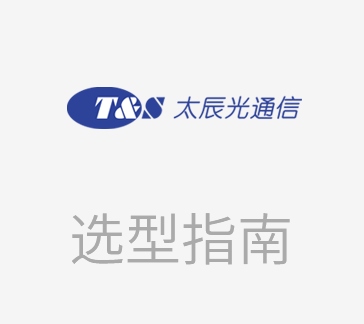
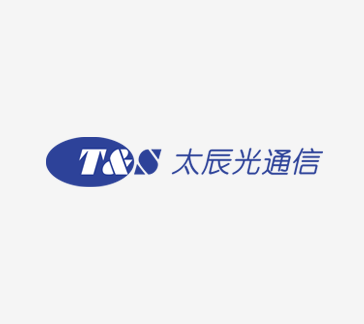
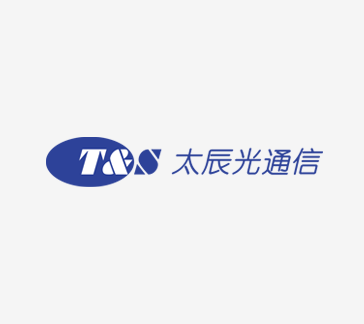
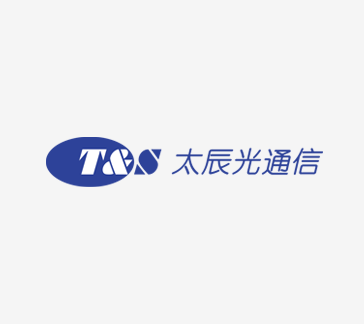
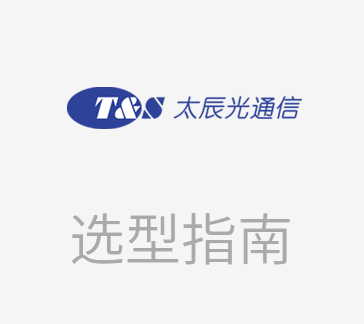



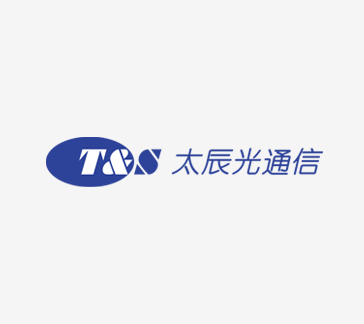























































































































































































登录 | 立即注册
提交评论